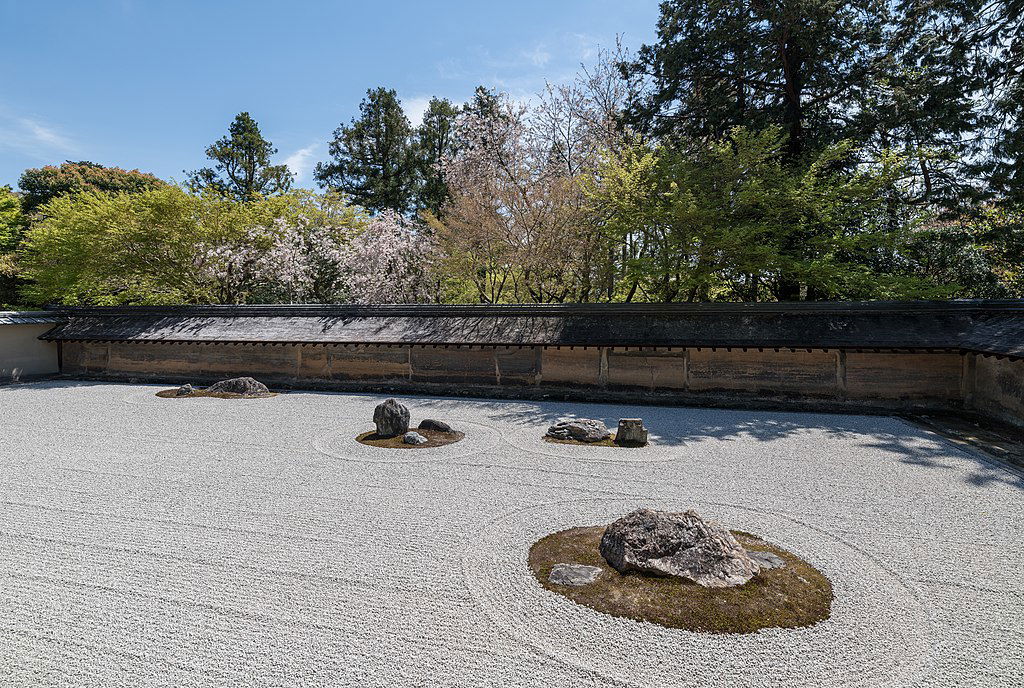Why Kyoto’s Zen Gardens Are the Ultimate Escape for Peace and Tranquillity
For most people visiting the city, Kyoto’s Zen gardens offer a peaceful hour or two from their daily lives. The best thing about these beautiful gardens is that there’s nothing too elaborate about them. Take a walk through the gardens, revelling in the soul-soothing atmosphere, only to be stirred by the chime of a bell or the rustling of bamboo leaves. In these quiet corners of the city, you can reflect on the balance between nature and human design.

img via wikipedia commons
The Art of Zen Gardens
Zen gardens are a world away from modern, often worry-ridden life. These are peaceful and tranquil corners of the city – there’s no hurry, and nothing is rushed. Zen gardens are definitely easy on the eyes, but they’re also designed to reflect Japanese wisdom and aesthetics. Simplicity and balance are the guiding principles behind the designs.Must-visit Zen gardens include Daitoku-ji, Saihō-ji, and Ryōan-ji Temple, which is less than 30 minutes from Park Hotel Kyoto, one of the popular 4-star hotels in Kyoto. You’ll find more about these gardens in the latter part of this article.
Origins and Philosophy
Zen gardens in Kyoto have a close connection with Buddhist principles such as simplicity, mindfulness, and the transient nature of life. These gardens made their debut during the Muromachi period when Zen Buddhism was thriving in Japan. It was monks who designed these gardens to use them as spaces for meditation. These gardens are influenced by Chinese landscape principles and are designed to inspire deep thought and inner peace.Simplicity is the core principle. Every single element has a special meaning. The way the rocks are arranged, the pattern of the gravel, and the choice of plants all serve a purpose. If you’ve been feeling stressed lately, a visit to one of these gardens will give you the respite you need.
Design
Here’s a deeper look at elements of zen gardens.
- Rocks and stones: The main features of the Zen gardens, rocks and stones represent mountains, islands, or even animals. They help create the look of a natural landscape. The placement of rocks and stones follows the karesansui style or dry landscape gardening.
- Gravel and sand: These represent rivers and the ocean. Monks rake them to make them look like waves, which is a mindful and peaceful practice.
- Plants and trees: Zen gardens don’t feature many plants or trees, but the few that there are serve a purpose. Moss adds a grounding feel, while trees like pine or maple bring seasonal beauty to the gardens.
- Water: You don’t find water in many Zen gardens because there’s sand and gravel to suggest water. However, some gardens feature a pond or a stream, which adds to the natural and peaceful environment.
Every single detail of Zen gardens is carefully thought out. Even the tiniest space between rocks is planned. According to the Japanese ma principle, space is as important as objects themselves.
Ryōan-ji Temple
One of the most famous Zen gardens in Japan, Ryōan-ji’s garden follows the karesansui style. There are fifteen carefully placed rocks on white gravel. However, no matter where you stand in the garden, you can only see 14 rocks at a time.Looking over the Zen garden from the temple’s verandah is a must. There isn’t a set meaning behind the way the rocks are arranged – what do you think, though? It’s open to interpretation.
Saihō-ji
Also known as the Moss Temple, Saihō-ji is famous for the green, soft moss that covers the ground. The garden features a pond, and the winding paths lead you to serenity with peaceful views and new experiences at every turn.
Daitoku-ji
It’s a temple complex with several temples. Each temple has a Zen garden. All these gardens are incredibly peaceful and must-visits, but if you have limited time, make sure to visit at least Daisen-in and Ryōgen-in.
